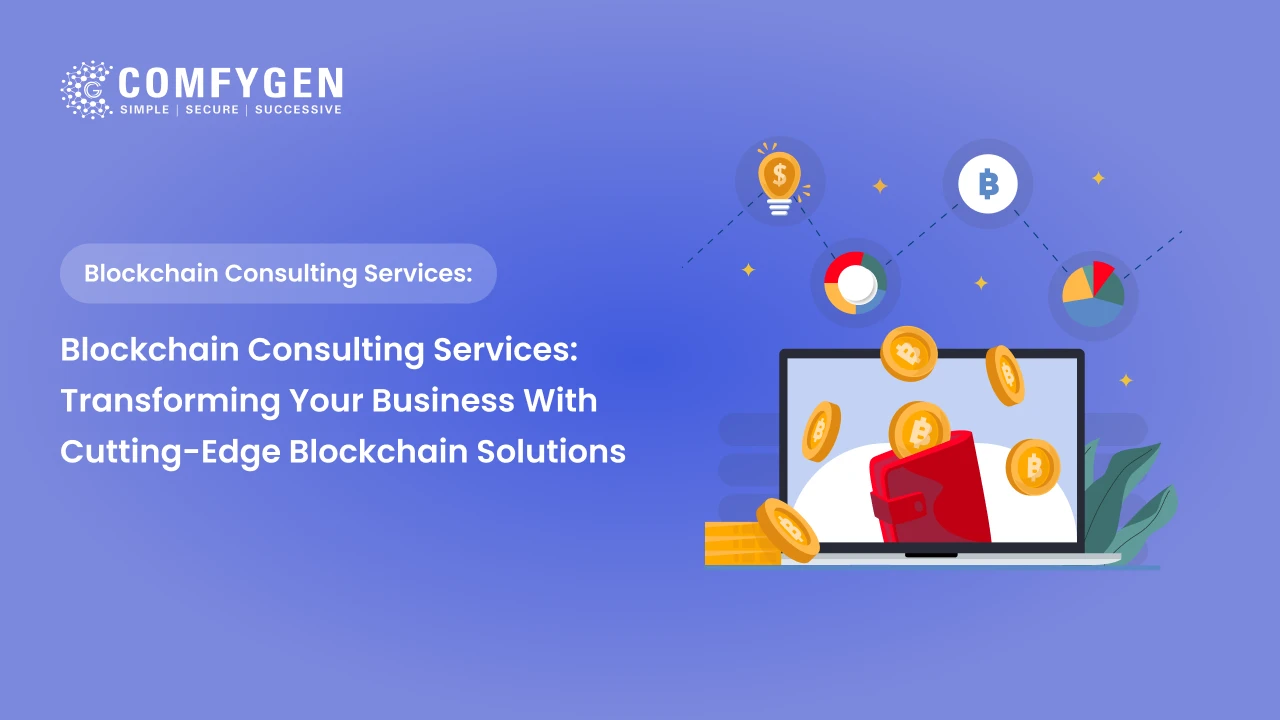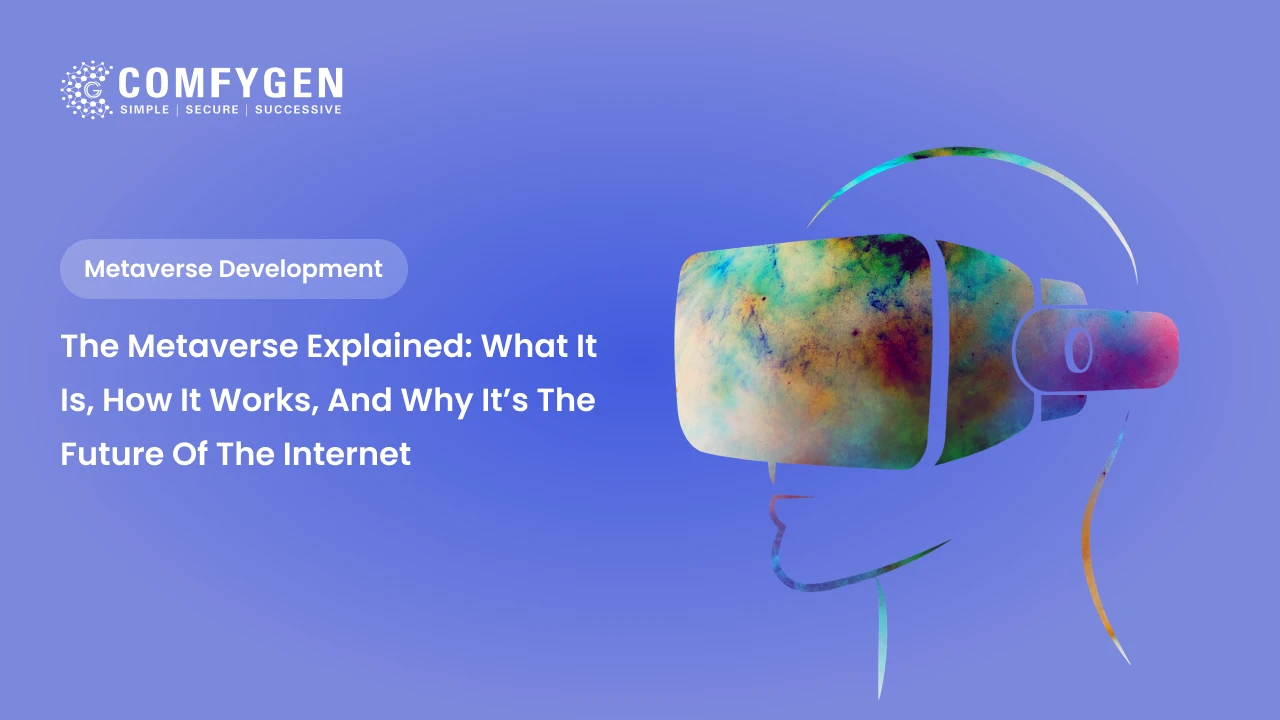Top Mobile App Development Trends to Watch in 2025
Mobile apps became a necessity in the evolving marketplace and lifestyles. Therefore, demand for mobile app development increased, so, significantly, you should follow some innovative app development trends to keep up with the current market standards. In this blog, we will help you acknowledge some top mobile app development trends in 2025 to build a successful app.
Users spend an average of 4.8 hours every day on mobile apps, which is a third of their waking hours. They are well-versed and aware of customized, unique features nowadays; that is why you need to be strategic and plan while developing dedicated custom mobile apps.
The technologies of AI/ML, 5G, AR/VR, blockchain, and others are reshaping how apps will be built, experienced, and monetized. Statista cites that AI-enabled apps are projected to account for over 70% of user interactions by the end of the year, clear evidence of a seismic shift in how mobile experiences will be delivered.
With the rise of digital transformation, it is no longer enough to just build an app – it will be about building apps that are smarter, faster, more inclusive, and future-ready.
This blog breaks down the top mobile app development trends to watch in 2025, backed by global insights, use cases, and actionable takeaways to help you stay ahead of the curve.
Ready to build the
next-gen mobile app for 2025?
Contact Now
Mobile App Development Trends 2025
Listed are some advanced AI mobile app development trends of 2025, which are bringing revolution in the operations and service offerings:
AI-Driven Personalization Becomes Mainstream
AI became a necessity to sustain in the current market standards. By 2025, Gartner predicts AI-enabled personalization will influence more than 80% of customer interactions with no human involvement. We live in a world where users expect mobile apps to know, anticipate, and respond to their preferences as they happen.
From content recommendations in streaming apps to smart shopping recommendations in e-commerce apps, app developers use artificial intelligence ROI, to deliver personalized experiences using real-time user context. Through the use of machine learning, natural language processing (NLP), and predictive analytics, we can provide a hyper-personalized experience to increase user engagement and enhance conversions.
-
E-commerce: AI-generated product recommendations based on browsing patterns, customer shopping history
-
Healthcare: Applications that modify treatment plans or reminders based on predictive patient behavior
-
Fitness: A personalized workout and diet plan based on wearables data analytics
-
Content Streaming: Tailored video/audio feeds created based on usage history, time of day, and mood analysis capacity.
AI is no longer optional—it’s a must-have. Businesses that integrate intelligent personalization are seeing 30-40% higher user retention and better app session durations. If you’re building an app in 2025, AI isn’t just a feature—it should be part of your product DNA.
The 5G Revolution: Enhancing Mobile Experiences
5G technology is revolutionizing the way mobile apps are performing in numbers we have never seen. When you consider the speeds available from 5G, up to 100x faster than 4G, and ultra-low latency (sometimes 1ms), it is now becoming realistic not only to transmit real-time data but also to facilitate rich media and support numerous devices and experience-oriented use cases. These applications generally require high data usage compared to typical app use cases, including gaming, video streaming, AR/VR, and other high-bandwidth use cases across devices like the IoT.
Ericsson’s Mobility Report finds that by 2025, there could be greater than 1.9 billion mobile subscriptions globally using 5G technology,y which will give mobile developers tremendous capabilities in defining how applications are built, how users experience the mobile apps, and the overall changes to both processes and delivery and service models. Developers will now be able to deliver amazing and unique data-oriented real-time mobile applications without concerns of lag, buffering, or bandwidth.
-
Reduced Load Times: Speed up app open times into milliseconds, as well as overall user experience
-
Enhanced Streaming: Deliver 4K/8K video streaming and cloud gaming with virtually no buffering
-
Achieve More Responsive AR/VR Experiences: Deliver more immersive and ultra-smooth experiences
-
Smarter IoT Experiences: Enable interconnected homes, wearables, and real-time health monitoring
Cross-Platform Development Dominates the Scene
Businesses can no longer afford to build native apps separately for Android and iOS, not only because of the cost, but because users want to have a consistent experience across devices. This is where cross-platform frameworks such as Flutter, React Native, and Kotlin Multi Platform are coming to the forefront.
According to Statista, over 40% of developers globally prefer cross-platform tools as the advantages of shorter development cycles, lower maintenance, and broader reach are attracting developers’ interests to various platforms. Given the release of Flutter 4.0 and as React Native continues to grow, the performance gap between native and web apps is narrowing. There are great advantages to using cross-platform tools that SMEs and startups can leverage for advantages over large enterprises.
-
Single Codebase: Write once, run everywhere (web, desktop, iOS, and Android)
-
Fast Time-to-Market: Launching MVPs in weeks, not months
-
Unchanged UI/UX: Seamless transition to and from each platform
-
Reduced Dev and Maintenance Costs: No need to hire separate teams for each (iOS, Android) OS
Augmented Reality (AR) & Virtual Reality (VR) Integration
AR and VR are no longer reserved for gaming – they’ve become viable tools in retail, education, real estate, and many healthcare applications. The advent of immersive hardware like the Apple Vision Pro and the growth of ARKit/ARCore support have given developers the ability to create real-world meets digital world experiences that considerably increase both engagement and retention.
Statista is predicting that the global AR/VR market size will pass $58 billion before the end of 2025, with mobile apps continuing to represent one of the largest channels for user access. Mobile apps using AR/VR features are achieving user engagement/interaction rates 3x higher than traditional apps.
-
Retail: Virtual try-ons, product previews (IKEA, Lenskart, Sephora)
-
Real estate: 3D Home tours and walkthroughs of properties
-
Education: Immersive learning modules across science, history, and engineering
-
Healthcare: AR overlays for surgery training, VR for mental health therapy
-
Entertainment: Immersive concerts, AR filters, location-based gaming (Pokémon GO 2.0)
Blockchain-Powered Mobile Apps for Security & Transparency
Blockchain technology is emerging as a foundational layer for mobile app development due to data breaches and privacy concerns. With its decentralized architecture offering security and transparency without the need for third-party verification, blockchain is an excellent option for any app involving sensitive data, digital transactions, or handling identity.
The global blockchain mobile app market is expected to exceed $105 billion by 2025 (Allied Market Research), with finance, healthcare, and supply chain leading sectors in adoption. The applications being developed using blockchain infrastructure are already driving improvements for utility functions like data integrity, preventing fraud, and improving user trust.
-
Decentralized finance (DeFi): Crypto wallets, decentralized exchanges, and NFT trading platforms
-
Identity management: Digital ID verification and authentication without centralized storage.
-
Healthcare: Secure sharing of patient records and medical data.
-
Voting & governance: Tamper-proof digital voting applications.
-
Supply chain & logistics: Traceability and end-to-end visibility of product journeys.
Rise of Super Apps & Mini-App Ecosystems
Super Apps are now emerging globally in 2025, and in its beginning, majorly Asia was attracted. These apps are digital platforms that aggregate various services into a single app environment (e.g., messaging, shopping, payment, social media, travel bookings, and more). They are just like WeChat, Paytm, and Gojek, but for global audiences of fintech, e-commerce, and productivity, respectively.
Insider Intelligence recently reported that 60% of users in emerging markets would rather use super apps than separate apps because of the convenience, speed, and integration. With Gen Z demanding faster, smarter, and integrated experiences, businesses are now building (or integrating) mini-apps within a single framework to retain customers and create stickiness.
-
A single app offering multiple core functionalities
-
Built-in mini-apps created by third-party developers
-
A secure wallet/payment system
-
Personalized and intelligent feed based on user behavior
Voice Search & Conversational Interfaces
As smart assistants such as Siri, Alexa, and Google Assistant increase in popularity, voice-based interaction will soon become an ordinary part of mobile apps. By 2025, more than 50% of smartphone users are expected to utilize some form of voice interface daily, not only for search but for navigation through applications, purchase actions, and the consumption of personalized information.
Mobile apps can now utilize Natural Language Processing (NLP) and speech recognition as well as emotion AI to determine user intent, contextual elements of the interaction, and even user state/feeling—all of which make conversational experiences become natural, quick, and seem almost intuitive.
-
Hands-free Convenience: Ideal for multitasking and accessibility
-
Speed: Voice queries are 3x faster than typed ones
-
Inclusivity: Opens app usability for visually impaired or differently-abled users
-
Personalization: Apps can respond differently based on tone, pace, or previous queries
Mobile Commerce (mCommerce) Gets Smarter
With mobile devices accounting for over 72% of total e-commerce sales globally (Statista, 2025), mobile commerce is no longer just a convenience—it’s the primary channel for digital shopping. What’s changing in 2025 is how smart, seamless, and AI-powered the entire experience has become.
From AI-driven product recommendations to voice-enabled checkout, the mobile shopping journey is now deeply personalized, fast, and frictionless. Combine this with innovations like Buy Now, Pay Later (BNPL), crypto payments, and 1-tap checkout, and users are not just browsing—they’re buying more, faster.
-
AI & ML: Smart product suggestions based on behavior, purchase history & trends
-
AR Integration: Try-before-you-buy via mobile camera (e.g., clothing, furniture)
BNPL Services: Flexible payment options increasing average order value -
Chatbots & Voice Commerce: Instant support + voice-activated shopping
-
One-Click Checkout: Reducing cart abandonment with seamless UX
PWAs (Progressive Web Apps) for Lightweight Performance
Progressive Web Apps (PWAs) are taking center stage in 2025 as businesses look for ways to deliver app-like experiences without the hassle of downloads or storage issues. PWAs combine the best of web and mobile apps—offering speed, reliability, and offline functionality while working directly through a browser.
With mobile users demanding fast-loading, low-storage, and cross-device experiences, PWAs are becoming a smart alternative, especially for startups, content platforms, and service-based companies. By 2025, it’s estimated that PWAs will contribute to a 36% higher conversion rate compared to traditional mobile websites (Google Research).
-
Instant Load Time: Caching allows faster load even on slow networks
-
Offline Capability: Users can interact with core features without connectivity
-
No App Store Dependency: Skip approval delays and reduce friction
-
Cross-Platform Compatible: Works seamlessly across devices and OS
-
Lightweight & Storage-Friendly: No installation required, low memory usage
Focus on Accessibility & Inclusive Design
Mobile app development isn’t just about innovation—it’s also about inclusion. With over 1.3 billion people globally living with some form of disability (WHO), building accessible apps is no longer optional—it’s a regulatory, ethical, and market-driven necessity.
As global policies like ADA, WCAG 2.2, and EN 301 549 tighten their requirements, blockchain developers and product teams are prioritizing inclusive UX to ensure apps are usable by everyone, regardless of age, ability, or condition.
-
Legal Compliance: Avoid lawsuits and penalties by adhering to global standards
-
Brand Reputation: Inclusive apps reflect a socially conscious brand image
-
Market Reach: Tapping into underserved user groups opens new engagement opportunities
-
Better UX for All: Accessibility improvements often benefit all users (e.g., dark mode, voice navigation)
Build the Future
of Mobile Apps with Us
Contact Now
Final Verdict
Mobile app development is being defined by cutting-edge technologies, user-centric innovation, and data-driven personalization. Whether you’re a startup founder, enterprise strategist, or app developer, staying ahead of these trends is essential to building apps that not only meet modern expectations but also outperform in an increasingly competitive digital economy.
From AI-driven mobile app personalization and 5 G-powered real-time experiences to cross-platform app development, AR/VR integration, and blockchain-based mobile security, every trend discussed in this blog plays a vital role in reshaping how users engage, shop, communicate, and live through mobile devices.
Moreover, the rise of super apps, voice interfaces, and smart mCommerce solutions is pushing businesses to think beyond just functional apps, toward scalable, inclusive, and intelligent mobile ecosystems. Integrating PWAs, ensuring mobile accessibility, and embracing green app development practices are no longer optional—they are essential to staying relevant.
Frequently Asked Questions (FAQs)
What are the top mobile app development trends in 2025?
Why is AI so important in mobile app development in 2025?
How will 5G impact mobile apps in 2025?
What industries benefit the most from AR/VR in mobile apps?
Are Progressive Web Apps (PWAs) better than native apps in 2025?

Mr. Saddam Husen, (CTO)
Mr. Saddam Husen, CTO at Comfygen, is a renowned Blockchain expert and IT consultant with extensive experience in blockchain development, crypto wallets, DeFi, ICOs, and smart contracts. Passionate about digital transformation, he helps businesses harness blockchain technology’s potential, driving innovation and enhancing IT infrastructure for global success.
Based on Interest

Blockchain Consulting Services: Transforming Your Business with Cutting-Edge Blockchain Solutions
Introduction Blockchain technology is revolutionizing industries by providing secure, decentralized, and transparent solutions. As businesses across the world explore their potential,…








